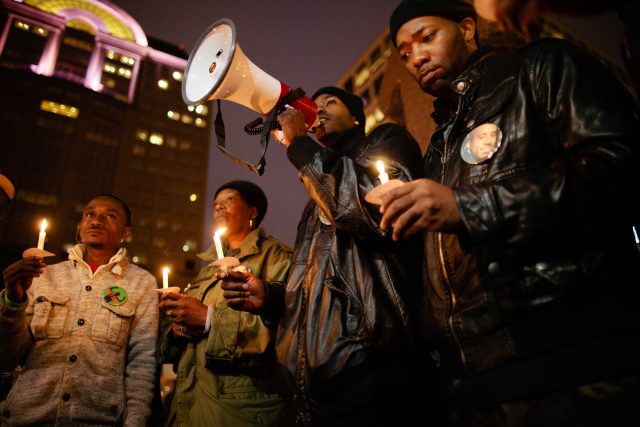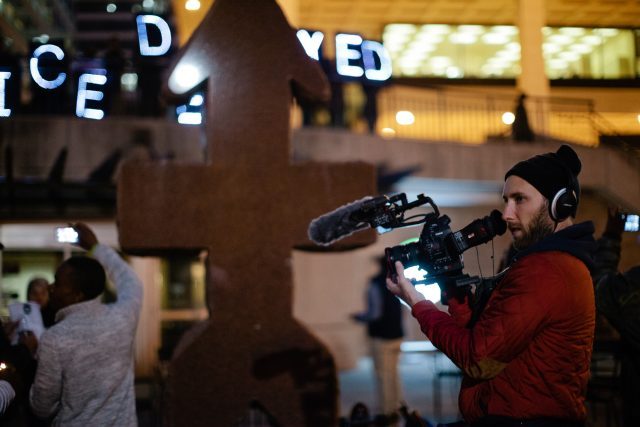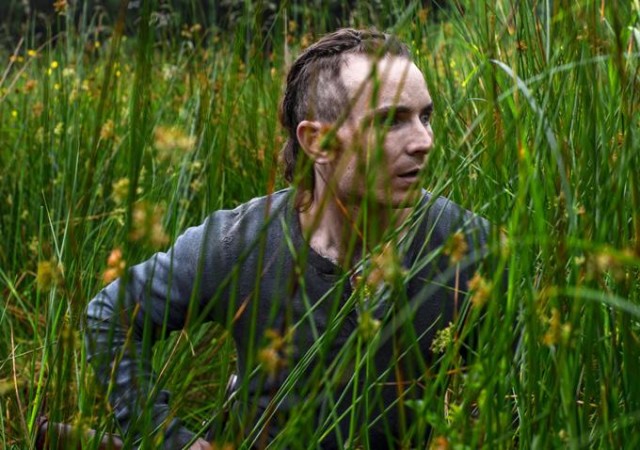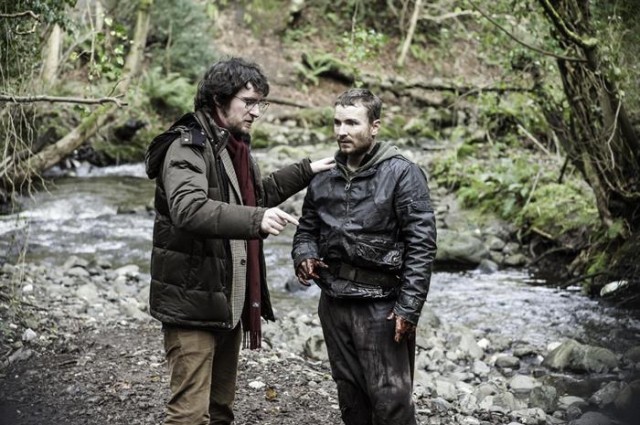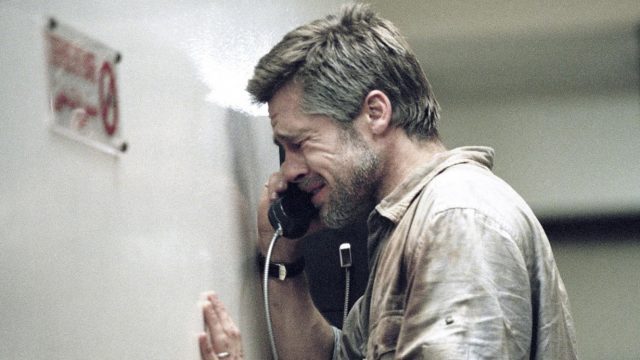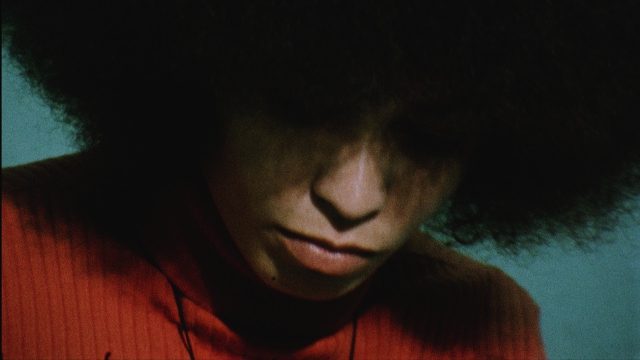
Fernando (Paul Hamy) sets out on a fantastical spiritual journey in João Pedro Rodrigues’s strangely compelling and beautifully photographed film THE ORNITHOLOGIST
THE ORNITHOLOGIST (O ORNITÓLOGO) (João Pedro Rodrigues, 2016)
IFC Center
323 Sixth Ave. at West Third St.
Opens Friday, June 23
212-924-7771
www.strandreleasing.com
www.ifccenter.com
 João Pedro Rodrigues reimagines the story of Fernando Martins de Bulhões, also known as Anthony of Lisbon and Saint Anthony of Padua, in the utterly bizarre and infectiously weird adventure drama The Ornithologist. Rodrigues, who also dealt with the thirteenth-century priest’s legacy in the 2013 zombie short Morning of Saint Anthony’s Day, puts ornithologist Fernando (Paul Hamy) through a series of tests after his canoe capsizes while he’s on a bird-watching expedition. He is found near death on the shore by a pair of Chinese pilgrims (Han Wen and Chan Suan), walking Camino de Santiago, who decide to do something very odd with him. His Stations of the Cross journey continues as he meets a deaf and mute goatherd (Xelo Cagiao), a group of colorful, masked caretos, and a trio of topless women on horseback (Juliane Elting, Isabelle Puntel, and Flora Bulcao), who in different ways challenge his sexuality and spirituality. Rodrigues (The Last Time I Saw Macao, To Die Like a Man) infuses the wild tale with references to Christianity, paganism, ritual, superstition, and Greek mythology as Fernando’s physical and psychological strength is tested in oddball events that get stranger and stranger until the director, who was already dubbing in Hamy’s Portuguese lines with his own voice, starts switching places with the actor.
João Pedro Rodrigues reimagines the story of Fernando Martins de Bulhões, also known as Anthony of Lisbon and Saint Anthony of Padua, in the utterly bizarre and infectiously weird adventure drama The Ornithologist. Rodrigues, who also dealt with the thirteenth-century priest’s legacy in the 2013 zombie short Morning of Saint Anthony’s Day, puts ornithologist Fernando (Paul Hamy) through a series of tests after his canoe capsizes while he’s on a bird-watching expedition. He is found near death on the shore by a pair of Chinese pilgrims (Han Wen and Chan Suan), walking Camino de Santiago, who decide to do something very odd with him. His Stations of the Cross journey continues as he meets a deaf and mute goatherd (Xelo Cagiao), a group of colorful, masked caretos, and a trio of topless women on horseback (Juliane Elting, Isabelle Puntel, and Flora Bulcao), who in different ways challenge his sexuality and spirituality. Rodrigues (The Last Time I Saw Macao, To Die Like a Man) infuses the wild tale with references to Christianity, paganism, ritual, superstition, and Greek mythology as Fernando’s physical and psychological strength is tested in oddball events that get stranger and stranger until the director, who was already dubbing in Hamy’s Portuguese lines with his own voice, starts switching places with the actor.
When he was younger, Rodrigues had a major interest in ornithology, and he relates that to filmmaking early on. Fernando stops in his canoe and takes out his binoculars to look at a bird soaring above him and follows a black stork protecting its eggs in partially hidden reeds; the director cuts to our view of the bird, comparing the binoculars to the movie camera while also putting us inside Fernando’s head. The dazzling cinematography is by Rodrigues regular Rui Poças; everything was shot on location, with no interiors or studio sets. The stellar art direction and production design is by cowriter and regular Rodrigues collaborator João Rui Guerra da Mata, and the subtly haunting score is by Séverine Ballon. “I have to admit this Fernando, the future Anthony, gradually became infused with my personal story. While he may live inside me, in a way I returned the favor and made myself live inside him,” Rodrigues explains in his poignant director’s statement. “My film is a purposefully transgressive and blasphemous re-appropriation of the saint’s life.” Saint Anthony is the patron saint of lost things; after seeing the film, audiences will be happy that they found it.
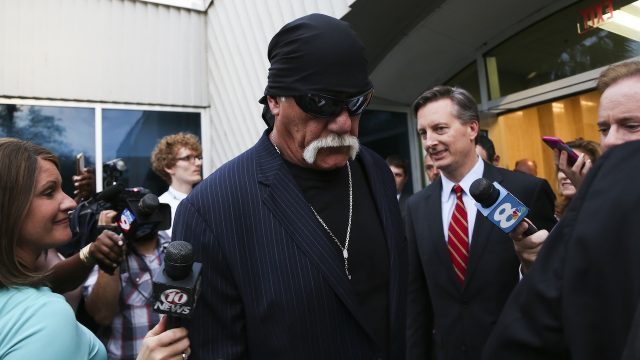
 The 2017 Human Rights Watch Film Festival comes to a close June 18 with the New York premiere of Brian Knappenberger’s Nobody Speak: Trials of the Free Press, a deeply troubling Netflix original that looks into the growing battle between billionaires and the fourth estate, between a person’s right to privacy and freedom of the press. Knappenberger begins by exploring the landmark Bollea v. Gawker case, in which Hulk Hogan, whose real name is Terry Gene Bollea, sued online media outlet Gawker for posting nine seconds of a tape depicting Bollea having sex with Heather Clem, the wife of his then-best friend, Todd Alan Clem, better known as radio personality Bubba the Love Sponge. The jury awarded Bollea $140 million, bankrupting Gawker, but Knappenberger reveals that the case was about a lot more than invasion of privacy — it was really about control of the media by the extremely wealthy. And Hogan/Bollea is not that wealthy. “Don’t be fooled into thinking that just because this case is so sleazy and rests on sex that it’s not important; this is one of the most important First Amendment cases in American history,” says Leslie Savan, who blogs on politics and the media for The Nation. “We’re talking about the very notion of truth,” she later adds. Knappenberger speaks extensively with Gawker cofounder Nick Denton, who defends what the company did as well as its overall journalistic ethics, covering stories that others wouldn’t; Knappenberger also meets with Gawker cofounder Elizabeth Spiers; former editor in chief A. J. Daulerio, who posted the Hogan story and sees himself as a patsy; former deputy editor James Wright; Hogan lawyers David Houston and Charles Harder; and former Gawker executive editor John Cook, who is boldly outspoken about Gawker’s purpose. “I wanted to write true things about bad people, and that’s what Gawker gave us all the freedom to do,” he says. First Amendment lawyer Floyd Abrams notes, “The reason to save Gawker was not because Gawker is worth saving. The reason to save it is that we don’t pick and choose what sort of publications are permissible, because once we do, it empowers the government to limit speech in a way that ought to be impermissible.” Among the other talking heads offering compelling insight are Politico media writer Peter Sterne, associate professor of journalism Jay Rosen, Buzzfeed business reporter Will Alden, NPR media correspondent David Folkenflik, and former New York Times columnist David Carr. The story takes a strange turn when it is discovered that there were potential improprieties involving Judge Pamela Campbell and that the lawsuit is being funded by billionaire venture capitalist Peter Thiel, who was outed by Gawker in 2007 and is now exacting a dangerous kind of revenge.
The 2017 Human Rights Watch Film Festival comes to a close June 18 with the New York premiere of Brian Knappenberger’s Nobody Speak: Trials of the Free Press, a deeply troubling Netflix original that looks into the growing battle between billionaires and the fourth estate, between a person’s right to privacy and freedom of the press. Knappenberger begins by exploring the landmark Bollea v. Gawker case, in which Hulk Hogan, whose real name is Terry Gene Bollea, sued online media outlet Gawker for posting nine seconds of a tape depicting Bollea having sex with Heather Clem, the wife of his then-best friend, Todd Alan Clem, better known as radio personality Bubba the Love Sponge. The jury awarded Bollea $140 million, bankrupting Gawker, but Knappenberger reveals that the case was about a lot more than invasion of privacy — it was really about control of the media by the extremely wealthy. And Hogan/Bollea is not that wealthy. “Don’t be fooled into thinking that just because this case is so sleazy and rests on sex that it’s not important; this is one of the most important First Amendment cases in American history,” says Leslie Savan, who blogs on politics and the media for The Nation. “We’re talking about the very notion of truth,” she later adds. Knappenberger speaks extensively with Gawker cofounder Nick Denton, who defends what the company did as well as its overall journalistic ethics, covering stories that others wouldn’t; Knappenberger also meets with Gawker cofounder Elizabeth Spiers; former editor in chief A. J. Daulerio, who posted the Hogan story and sees himself as a patsy; former deputy editor James Wright; Hogan lawyers David Houston and Charles Harder; and former Gawker executive editor John Cook, who is boldly outspoken about Gawker’s purpose. “I wanted to write true things about bad people, and that’s what Gawker gave us all the freedom to do,” he says. First Amendment lawyer Floyd Abrams notes, “The reason to save Gawker was not because Gawker is worth saving. The reason to save it is that we don’t pick and choose what sort of publications are permissible, because once we do, it empowers the government to limit speech in a way that ought to be impermissible.” Among the other talking heads offering compelling insight are Politico media writer Peter Sterne, associate professor of journalism Jay Rosen, Buzzfeed business reporter Will Alden, NPR media correspondent David Folkenflik, and former New York Times columnist David Carr. The story takes a strange turn when it is discovered that there were potential improprieties involving Judge Pamela Campbell and that the lawsuit is being funded by billionaire venture capitalist Peter Thiel, who was outed by Gawker in 2007 and is now exacting a dangerous kind of revenge. 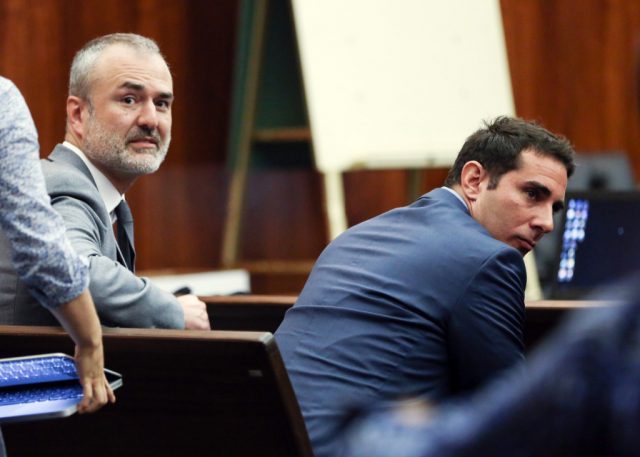
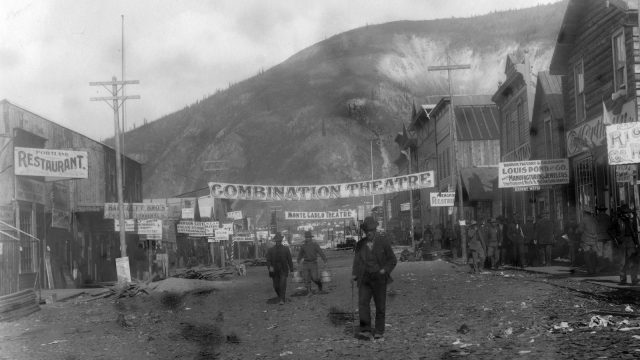
 “What power has gold to make men endure it all?” a title card asks in William Desmond Taylor’s 1928 silent film, The Trail of ’98, based on a novel by Robert Service. Both Taylor and Service were at one time residents of Dawson City, the town in the Yukon in Canada that was at the center of the Klondike Gold Rush in the late 1890s. In June 1978, while construction was just under way to build a new recreation center behind Diamond Tooth Gertie’s Gambling Hall in Dawson, Pentecostal minister and city alderman Frank Barrett uncovered a treasure trove of motion picture stock, hundreds of silent films that had been believed to have been lost forever. Writer, director, and editor Bill Morrison uses stunning archival footage from those films in his elegiac, beautiful documentary, Dawson City: Frozen Time, which brilliantly tells the story of greed, perseverance, and the growth of the entertainment industry in the late nineteenth and early twentieth centuries. After gold was discovered in Dawson, the indigenous Hän people were relocated to Tr’ochëk and some hundred thousand prospectors stampeded in, the gold mining destroying the Hän’s fishing and hunting grounds. Morrison also follows the invention of film itself, celluloid stock that would end up causing many fires, including one every year in Dawson for nine years. Bookended by an original interview with Michael Gates, Parks Canada curator of collections, and his wife, Kathy Jones-Gates, director of the Dawson Museum, the film traces the boom-and-bust fortunes and misfortunes of Dawson, as gambling casinos, movie theaters, hotels, and restaurants are built, including the Arctic, a hotel and restaurant owned by Ernest Levin and Fred Trump, the president’s grandfather, that might have served as a brothel as well. The film is supplemented with photographs by Eric A. Hegg, a giant in the field who left behind glass plates when he ultimately departed Dawson. Among others making their way through Dawson at one time or another are newsboy Sid Grauman, who went on to build Grauman’s Chinese Theatre; New York Rangers founder Tex Rickard; comic superstar Fatty Arbuckle; and Daniel and Solomon Guggenheim, who dominated the mining there.
“What power has gold to make men endure it all?” a title card asks in William Desmond Taylor’s 1928 silent film, The Trail of ’98, based on a novel by Robert Service. Both Taylor and Service were at one time residents of Dawson City, the town in the Yukon in Canada that was at the center of the Klondike Gold Rush in the late 1890s. In June 1978, while construction was just under way to build a new recreation center behind Diamond Tooth Gertie’s Gambling Hall in Dawson, Pentecostal minister and city alderman Frank Barrett uncovered a treasure trove of motion picture stock, hundreds of silent films that had been believed to have been lost forever. Writer, director, and editor Bill Morrison uses stunning archival footage from those films in his elegiac, beautiful documentary, Dawson City: Frozen Time, which brilliantly tells the story of greed, perseverance, and the growth of the entertainment industry in the late nineteenth and early twentieth centuries. After gold was discovered in Dawson, the indigenous Hän people were relocated to Tr’ochëk and some hundred thousand prospectors stampeded in, the gold mining destroying the Hän’s fishing and hunting grounds. Morrison also follows the invention of film itself, celluloid stock that would end up causing many fires, including one every year in Dawson for nine years. Bookended by an original interview with Michael Gates, Parks Canada curator of collections, and his wife, Kathy Jones-Gates, director of the Dawson Museum, the film traces the boom-and-bust fortunes and misfortunes of Dawson, as gambling casinos, movie theaters, hotels, and restaurants are built, including the Arctic, a hotel and restaurant owned by Ernest Levin and Fred Trump, the president’s grandfather, that might have served as a brothel as well. The film is supplemented with photographs by Eric A. Hegg, a giant in the field who left behind glass plates when he ultimately departed Dawson. Among others making their way through Dawson at one time or another are newsboy Sid Grauman, who went on to build Grauman’s Chinese Theatre; New York Rangers founder Tex Rickard; comic superstar Fatty Arbuckle; and Daniel and Solomon Guggenheim, who dominated the mining there. 
